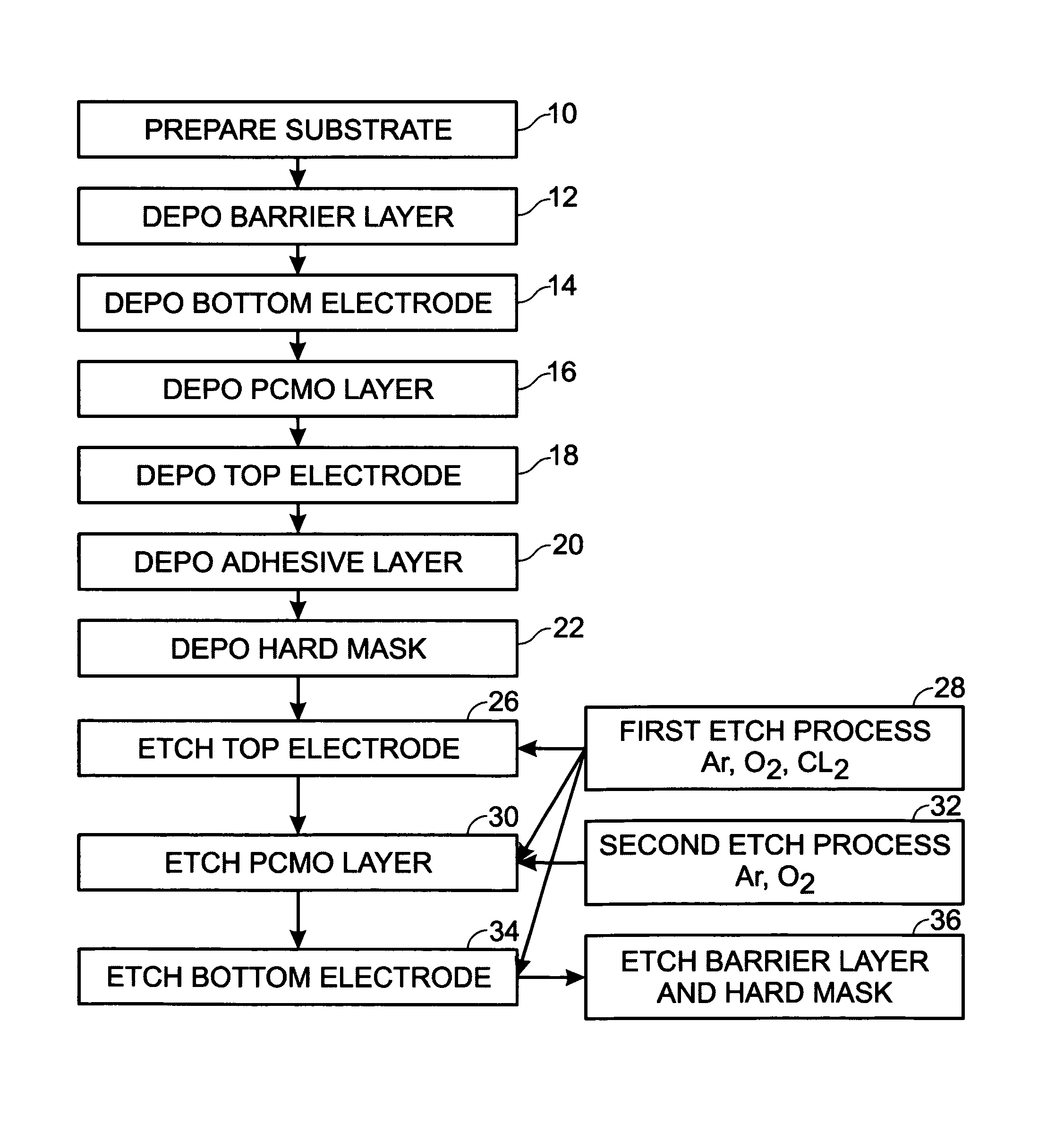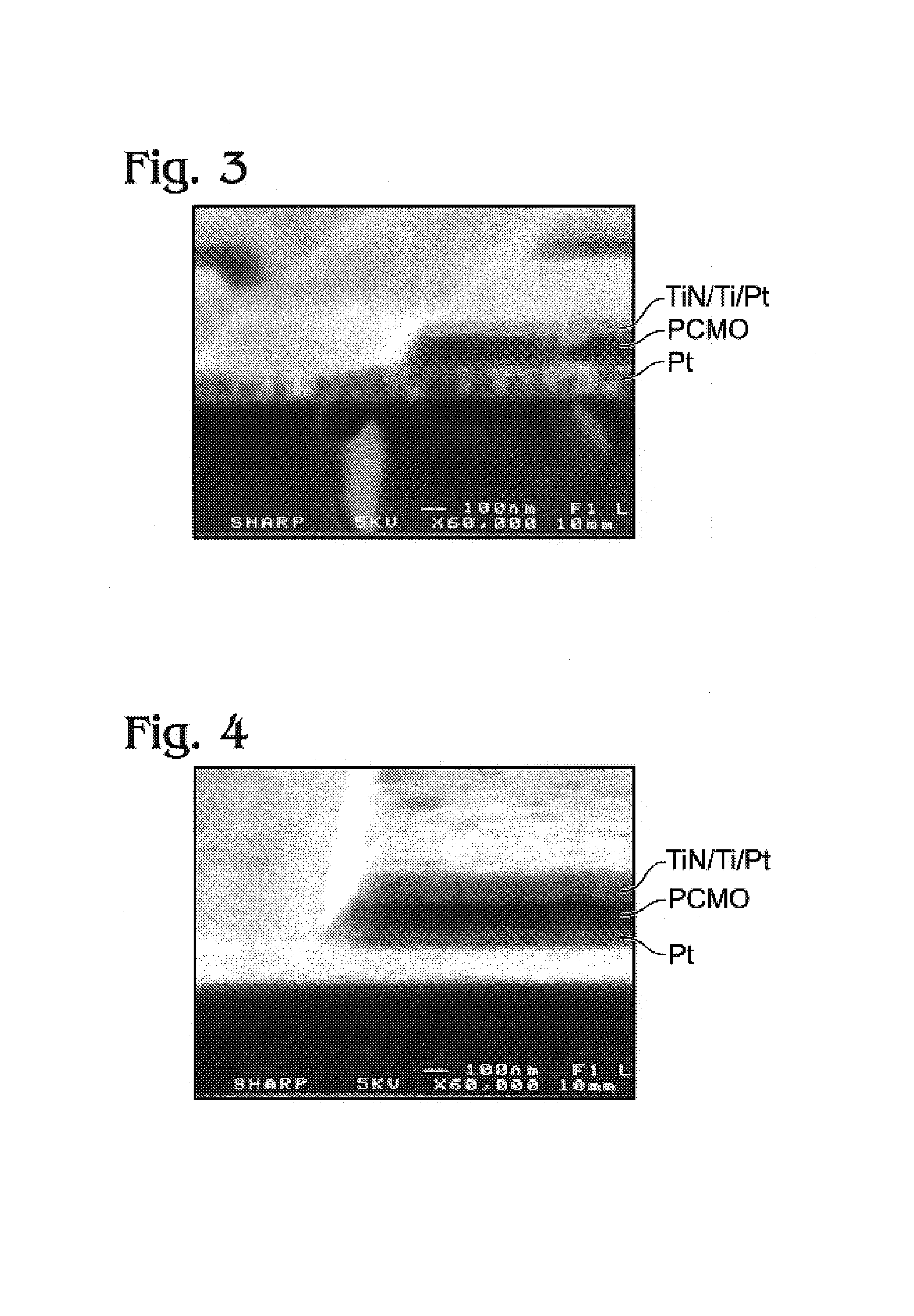One mask Pt/PCMO/Pt stack etching process for RRAM applications
a technology of etching process and mask, which is applied in the direction of basic electric elements, semiconductor/solid-state device manufacturing, electric apparatus, etc., can solve the problems of low etching rate, inability to etch portions of devices where etching is not desired, and little of the mask survives the etching process, etc., to achieve clean sidewalls and field, high selectivity
- Summary
- Abstract
- Description
- Claims
- Application Information
AI Technical Summary
Benefits of technology
Problems solved by technology
Method used
Image
Examples
Embodiment Construction
[0013]This invention resolves stack etching issues for electrode / perovskite / electrode stacks, such as Pt / PrxCa1-xMnO3 (PCMO) / Pt stacks, in that it minimizes the sidewall residue formed during an etching process. Two etching processes may be used in alternate steps during etching of a Pt / PCMO / Pt stack. The first etching process uses a gas mixture of Ar, O2, and Cl2, wherein Cl2 may be replaced by BCl3, CCl4, SiCl4, or combinations thereof. This process etches the platinum at a relatively high rate and results in less sidewall residue. In the case where platinum, or other noble metals, e.g., iridium or ruthenium, are used for both the top and bottom electrodes, this process is particularly suited for etching the top electrode and for etching the final portion of the PCMO, as the etching process approaches the bottom electrode. This process may also be used to etch a noble metal bottom electrode.
[0014]The second process uses a gas mixture of Ar and O2, and is essentially a sputtering p...
PUM
| Property | Measurement | Unit |
|---|---|---|
| RF bias power | aaaaa | aaaaa |
| RF bias power | aaaaa | aaaaa |
| temperature | aaaaa | aaaaa |
Abstract
Description
Claims
Application Information
 Login to View More
Login to View More - R&D
- Intellectual Property
- Life Sciences
- Materials
- Tech Scout
- Unparalleled Data Quality
- Higher Quality Content
- 60% Fewer Hallucinations
Browse by: Latest US Patents, China's latest patents, Technical Efficacy Thesaurus, Application Domain, Technology Topic, Popular Technical Reports.
© 2025 PatSnap. All rights reserved.Legal|Privacy policy|Modern Slavery Act Transparency Statement|Sitemap|About US| Contact US: help@patsnap.com



